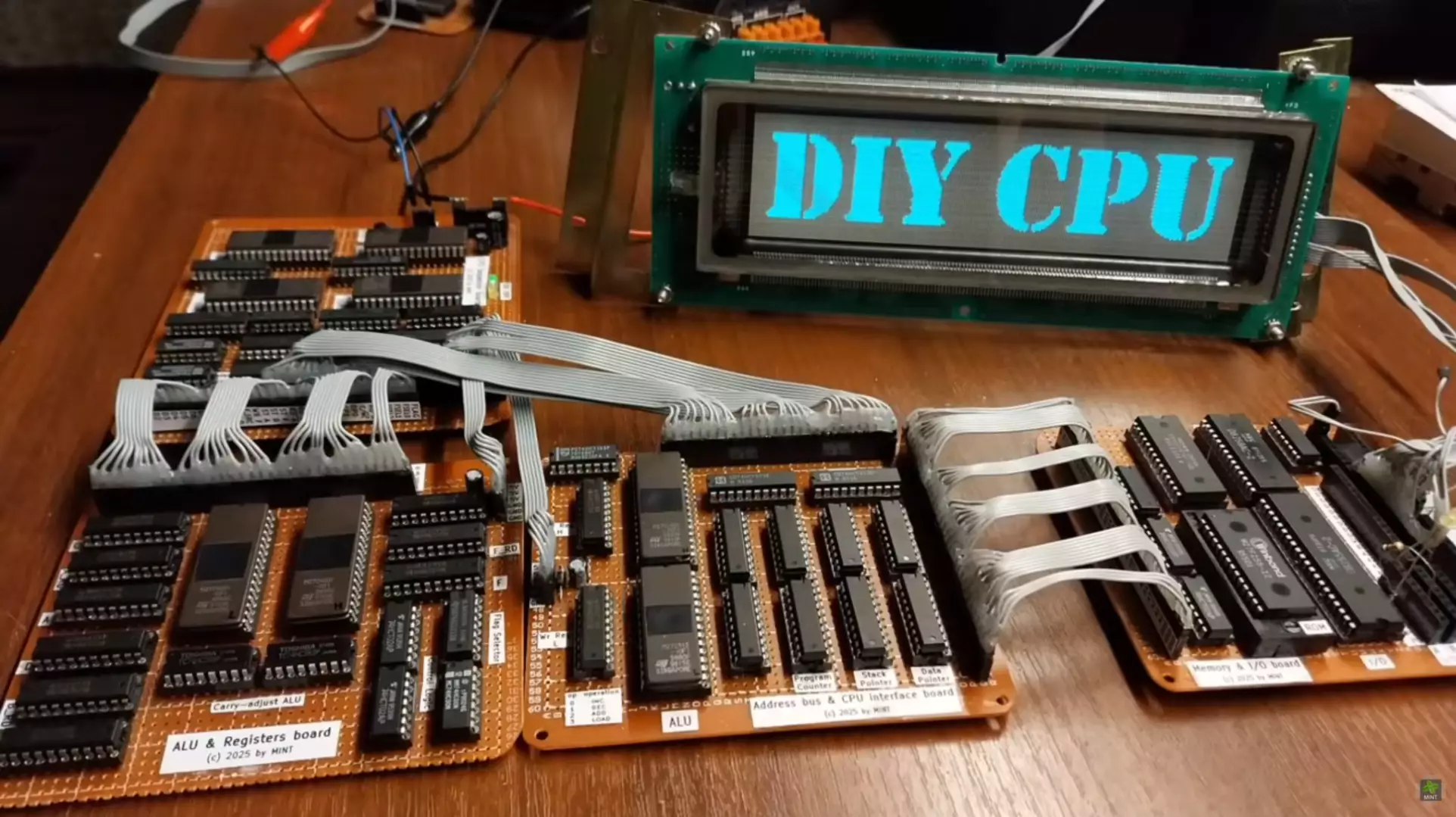In an era where technology progresses at lightning speed, the notion of building a processor from scratch might seem utterly outlandish to most. We are accustomed to processors being manufactured with advanced machinery, intricate lithography, and massive R&D budgets. Yet, the story of a hobbyist who took a soldering iron and a handful of vintage components to create a functioning 8-bit CPU challenges this perception profoundly. It serves as a reminder that innovation isn’t solely the domain of corporations; driven enthusiasts with curiosity and dedication can push boundaries in ways that inspire even the most seasoned engineers. This project demonstrates that passion, coupled with tenacity, can bring about reimagining what’s possible—regardless of scale.
The Empowerment of Retro Technologies
At the heart of this achievement lies a fascination with retro computer hardware, especially chips like the Zilog Z80. Once a cornerstone of personal computing and early portable devices, such vintage components symbolize a bygone era of electronics—simpler, more tangible, and more approachable. The enthusiast, known as MINT, didn’t merely collect these aging parts; he saw within them a canvas for experimentation. His journey reveals a shift in mindset: instead of dismissing outdated technology as obsolete or useless, he chose to explore and repurpose it. This approach underscores an essential truth—older technology, when understood and utilized creatively, can serve as a gateway to deepening our appreciation of digital fundamentals.
From Memory Chips to a Fully Functional CPU
What makes MINT’s project remarkable is not just the retro components he assembled but the conceptual leap he achieved. Early on, he experimented with simple tasks, such as controlling lights and motors, using old memory chips. But his curiosity pushed him further—he envisioned a complete 8-bit CPU capable of executing basic commands. Over three months, countless hours were dedicated to designing, soldering, and programming. This was not a mere proof of concept; it was a testament to perseverance and problem-solving. By meticulously understanding how each component interacts and learns to communicate with others, MINT bridged the gap between simple memory modules and a working microprocessor.
Revolution in Accessibility and Understanding
The implications of this project extend far beyond hobbyist satisfaction. For many, the complexity surrounding modern processors makes it feel inaccessible. However, MINT’s approach demystifies the inner workings of a CPU, transforming complex abstract concepts into tangible, comprehensible steps. His detailed documentation and demonstration serve educational purposes, allowing others to peer into the core mechanics of digital logic. Building such a CPU at home ignites curiosity about fundamental computer science principles and encourages a DIY ethos that can motivate the next generation of engineers, programmers, and inventors.
A Personal Triumph That Inspires Broader Innovation
Perhaps the most compelling aspect of MINT’s project is its broader message: you don’t need vast resources or institutional backing to create something meaningful. It’s about the desire to understand technology at its most elemental level and the willingness to dedicate time and effort. This project stands as proof that innovation, when driven by genuine passion, can be achieved on a small scale. It invites us to reconsider our assumptions about what’s possible within our reach and fosters a culture where tinkering and experimentation are valued as vital pathways towards learning and progress.
Challenging the Future of DIY Computing
Looking ahead, this kind of project signals a shift in how we perceive computing innovation. It paves the way for more educational and accessible avenues to explore CPU design and digital logic, potentially inspiring tailored hardware projects for students, hobbyists, and inventors. By breaking down barriers, such successes could herald a new wave of grassroots innovation—where building your own processor becomes not just a fantasy but an attainable goal for those willing to learn and experiment. This underscores an essential insight: true technological empowerment comes from curiosity combined with resourcefulness, not from reliance on costly manufacturing facilities or proprietary solutions.
In conclusion, MINT’s homemade CPU project exemplifies the beautiful intersection of passion, creativity, and technical mastery. It demonstrates that deep understanding and hands-on experimentation remain vital in a world increasingly dominated by closed, commercialized hardware. When individuals embrace the challenge of building their own computing devices, they unlock a profound sense of achievement and inspiration—paving the way for a future where innovation isn’t confined to corporate labs but is driven by everyday explorers with a soldering iron and an insatiable curiosity.

